Clifford Garstang's Blog, page 80
May 18, 2013
2013 Reading: River of Dust by Virginia Pye
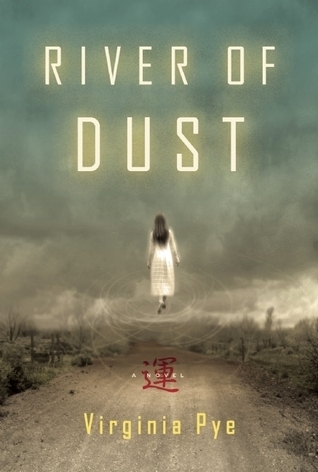 River of Dust: A Novel by Virginia Pye
River of Dust: A Novel by Virginia Pye
I’d really been looking forward to reading this novel because the author is a friend of mine. Besides that, though, it’s set in China, which I know something about.
I thoroughly enjoyed the read. As it turns out, the setting of the book was more unfamiliar to me than I expected. First, the time is 1910, just before the fall of the Empire, and the story revolves around missionaries in Shanxi Province, a milieu that I had not previously explored.
The setting is extremely important because Shanxi is the site of the massacre of missionaries that occurred during the Boxer Rebellion in 1900, an event that weighs heavily on the foreigners who have returned to the area a decade later to resume their missionary work. It’s a dry, dusty time—drought and famine have taken their toll. Some welcome the foreign faith as a way out of their misery; others resent it and cling to their old ways.
Into this environment come the Reverend and his pregnant wife Grace, and their two servants Ahcho (who has embraced Christianity) and Mai Lin (who follows the old ways, whatever she professes outwardly). In the first chapter, the missionary couple’s young son is kidnapped by Mongolian raiders. The book then, details the Reverend’s search for the boy and his encounters with various villagers, nomads, and opium smokers. Meanwhile Grace is ill and struggles with her pregnancy, and their servants just have to shake their heads and wonder what drives these foreigners.
The writing is beautiful and the issues raised—arrogance of the West, the clash of cultures, powerlessness and faith—are thought provoking.
May 16, 2013
The New Yorker: “The Dark Arts” by Ben Marcus
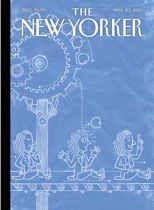 May 20, 2013: “The Dark Arts” by Ben Marcus
May 20, 2013: “The Dark Arts” by Ben Marcus
This story (available for free, so read it quick before they change their minds) started out well, I thought. But the ending seemed off, to me.
Julian is a young man with an autoimmune disorder seeking experimental stem-cell treatment in Dusseldorf, Germany. He has traveled to Europe with his girlfriend, Hayley, but they argued in the previous city and he has come to Dusseldorf alone. He waits at the train station for her every day and then goes off to get his treatment (which involves drawing blood, treating it, and then recirculation).
Two weeks go by. He’s staying in a cheap hostel for men in which he hears anonymous sex among the other residents at night. This, apparently, sets up the ending.
Julian is upset with Hayley for not coming. He’s upset with himself for spending his father’s money on the treatments (especially when he’s beginning to think that there’s nothing really wrong with him). And he’s feeling quite alone. Even the clinic cuts him loose when they decide there might be something in his brain causing the problem (which he interprets as “it’s all in his head”). So he’s feeling even more lonely and distraught when Hayley does, finally, show up.
And I don’t blame him one bit when he walks away from her. He’s kind of odd, but she’s treated him badly.
He goes back to the hostel and . . . he’s what doesn’t work for me . . . resolves to allow one of the other residents to come to him in the night.
Essentially, he’s so lonely that he’ll be happy with even this kind of meaningless touch. I was with him right until then. Maybe you don’t agree?
May 15, 2013
Guest Blog: “We Don’t Get a Do-over (Except When We Do)” by Valerie Nieman
 We Don’t Get a Do-over (Except When We Do)
We Don’t Get a Do-over (Except When We Do)
by Valerie Nieman
Time is an arrow, right? Fired into the future, never to return. “The Moving Finger writes; and, having writ,/ Moves on.” So why, on a quiet Sunday morning, was I poring over new proofs for a 25-year-old book? It’s a long story that has to do with beginnings and endings and the quirks of the publishing trade, and how that arrow can sometimes make a Looney Tunes reversal.
In 1988, I was sitting in the basement of a house still under construction on a West Virginia hill farm, reading proof for my first novel. Neena Gathering was to be the debut science fiction title in a brand-new paperback line being launched by Crown Publishers. I was ecstatic, of course, though the arrival of the cover art made me flinch. (Embrace your lurid covers, Fred Chappell said, and gave me a copy of his Dagon as inspiration.) So the book appeared, and people said Nice Things in Publishers Weekly and Locus. Neena was translated into Portuguese and selling in Brazil. I completed and delivered a second SF novel. I was well embarked on that course.
Then came the merger, a portent of Things to Come as the publishing industry continued to consolidate until just recently it has shrunk down to a Big Five. Random House swallowed Crown, and the new paperback line was pulped. End of story. Slightly singed, I quit writing SF and shifted fully into mainstream/literary fiction and poetry.
Then, last year, I received an email from Permuted Press, best known for discovering John Dies in the End. Jacob wrote that he was picking up “the good apocalyptic/post-apocalyptic titles that are out of print with the primary focus being getting them out in eBook.” Thus it came to be that on a Sunday morning, I was reading proof of the same book for a second time. It was strangely like reading a new book. Did I write this? Who was I then? More romantic, that’s for sure. But as I read those new/old words, I began to see certain turns of phrase and images that continue to crop up in my later work. Some white artifact turned up from the dirt. The taste and chill of well water. Broken roads, abandoned fences. Trilliums foaming down a hillside. The exotic and wonderful names of plants. A girl alone on the land, alert to sounds and scents.
Neena, all but forgotten, was the first-fruits of my writing, and much of what concerned me then concerns me still. I’ve just completed a novel set in North Carolina, and while the heroine of Backwater is quite different from Neena, Maggie shares her intrepid spirit and love for the land she roams.
What gnaws at us in the middle of the night? What make us stop and listen, entranced by a sound or a song? Those obsessions are what drive writers – and what most concerns me as a writer, I’ve come to understand, is the end of things. Eschatology more than apocalypse. I wonder about what has been lost – whether it’s the community built around a Rust Belt factory in Survivors, the tobacco farming culture of Blood Clay, or the entire civilization in Neena Gathering. What happens in a marriage, a family, a community, a nation when the structure collapses? How do the survivors go on? And it’s not just in SF books with gaudy covers. I can see this same strain in my poetry, from a narrative of dissolution written two decades ago,“Expedition,” reprinted by Ray’s Road Review, or a more recent take on the end in “On the Beach”- published in the North Carolina Literary Review a couple of years ago.
As I read those proof pages (on a screen this time instead of paper, with hand-written notes from a wonderful editor, Karen V. Haas) I found things to like and thing I’d change. But this was a reissue, not a revision. The book was a product of a different self, and so it stands.
Second chances. As writers, we’re in somewhat of an apocalyptic world ourselves. The standard model of publishing and bookselling is coming apart. New opportunities appear and disappear – I recently found correspondence about a story that was accepted by the Alabama Literary Review, a very early entrant (in Compuserve days!) into the world of online publishing. That venture folded, too early for the market, but its successors have found an audience. Self-publishing is now an option not just for unknown authors but for best-sellers. Kindle Singles offer a home for individual short works. And books have a second chance through other presses and companies – Barnes and Noble launched a Rediscovers series of reissued titles in 2009, while Cambridge University Press has been bringing back books from its own extensive catalog as well as other noteworthy out of print titles. Press 53, which is the publisher of two of my books, has reprinted works by the great John Ehle and Doris Betts and Guy Owen.
So, in the words of Winston Churchill, “Never, ever ever ever ever give up.” You feel crushed when a book goes out of print, a journal folds, an agent disappears. But you just never know when another door will open.
Neena Gathering has been renewed. To celebrate, I’m offering a couple of signed copies of that original book on a Goodreads giveaway. Meanwhile, the Audible version is available for pre-order. A sample of that telling by Cassandra Morris is now up, and it is a strange and wonderful thing indeed to hear Neena voiced!
On May 28, time reverses, and the debut debuts again.
Nothing can ever happen twice.
In consequence, the sorry fact is
that we arrive here improvised
and leave without the chance to practice.
Valerie Nieman is an award-winning writer, teacher, and editor whose work emerges from her Appalachian roots. She is the author of three novels, a collection of short stories, and a poetry collection. Her work has appeared widely in journals and in several anthologies. She has received an NEA creative writing fellowship as well as grants in North Carolina, West Virginia, and Kentucky, and prizes including the Eric Hoffer Prize in General Fiction, two Elizabeth Simpson Smith awards in fiction and the Greg Grummer Prize in poetry. She graduated from West Virginia University and Queens University of Charlotte. A longtime newspaper reporter and editor, she now teaches creative writing at North Carolina A&T State University and is the poetry editor of Prime Number magazine.
May 13, 2013
Tips for Writers: Like vs. As if
![resources_TipsForWriters[1]](https://i.gr-assets.com/images/S/compressed.photo.goodreads.com/hostedimages/1381524531i/4978759.png) I’ve been seeing a lot confusion over the difference between like and as if lately. I used to see it all the time when I was teaching Freshman Composition, but I also find it in creative writing submitted to Prime Number Magazine and also in the stories in my fiction workshops.
I’ve been seeing a lot confusion over the difference between like and as if lately. I used to see it all the time when I was teaching Freshman Composition, but I also find it in creative writing submitted to Prime Number Magazine and also in the stories in my fiction workshops.
Mostly I know which to use by ear, but there’s a grammar-based reason behind the usage, and it’s not complicated. Like is a preposition. As (or as if or as though) is a conjunction. Use like if it is followed by noun/object. Use as if it is followed by a verb/clause.
She ran like the wind. Here, like is a preposition followed by its object, the wind.
She ran as if the devil were right behind her. Here, as if is followed by a verb (actually a clause: the devil were right behind her). (We would NOT say “she ran like the devil were right behind her.”)
That’s pretty clear, right? According to Garner’s Modern American Usage, the use of like as a conjunction was considered nonstandard through the mid-20th century. But it is used that way in speech, often, and so now it is considered informal. Garner says: “Although this use of like can no longer be considered an outright solecism, as it once was, it hasn’t moved far from the borderline of acceptability. It is acceptable casual English; it isn’t yet in the category of unimpeachable English.”
In writing then, unless you are trying to reflect colloquial usage, it’s advisable to make the distinction.
Here’s some more on the subject: Grammar Girl.
May 6, 2013
The New Yorker: “Art Appreciation” by Fiona McFarlane
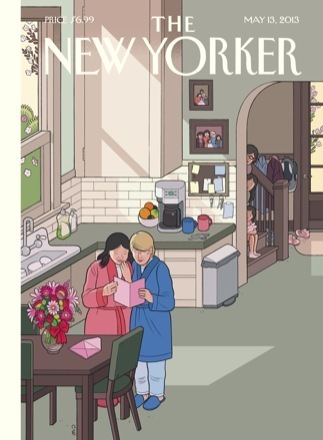 May 13, 2013: “Art Appreciation” by Fiona McFarlane
May 13, 2013: “Art Appreciation” by Fiona McFarlane
Henry, the main character of this story, is described in the Q&A with Fiona McFarlane as both a “nondescript everyman” and “unambitious and narcissistic.” Yep. That sounds about right. He works in insurance, he says he’s ambitious, but in truth his ambition severely circumscribed. He figures he’s set for life when his mother wins a modest sum in the lottery. He gambles on dog races and the ponies, but since he mostly wins he figures that’s okay. He doesn’t drink, at least.
He’s sleeping with Kath—a woman who apparently doesn’t think much of herself—when he meets and is attracted to Ellie, a woman who works in his office. Ellie is the one with real ambition—she’s taking an art appreciation class and had hopes of college and betterment that her family’s financial woes set back.
The real conflict here is that he wants Ellie to drop the art appreciation class. (He stops going to the dog track for a while and figures she should spend that time with him.) She, of course, wants to continue. But he’s a jerk . . . And then Kath comes back into the picture.
This is a very slow story. Good, in its way. It moves forward and doesn’t dwell in the past. It just moves forward a little too slowly.
May 5, 2013
The New Yorker: “The Gray Goose” by Jonathan Lethem
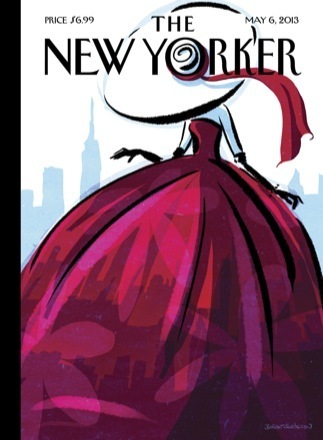 May 6, 2013: “The Gray Goose” by Jonathan Lethem
May 6, 2013: “The Gray Goose” by Jonathan Lethem
I started reading this days ago but it didn’t grab my attention at the time, possibly because the first half of the “story” is background—to hear the story of Miriam’s big night in 1958 we have to first hear about how her parents, Rose and Albert, met, conceived Miriam, and then split. It was this long flashback that suggested to me this might be a novel excerpt, which, it turns out, it is. (Lethem’s new novel is due out in September, we learn from the Q&A with Jonathan Lethem.) The backstory isn’t completely irrelevant—it’s helpful to know that Miriam’s parents were in a Communist Party cell and that a Burl Ives album was a prized early possession.
But the real story is when 17-year-old Miriam is out with a group of people (her “cell” she later thinks of them) at a folk club and hears that Burl Ives song performed. She remembers being taught the meaning of the song as a child and it gives her a feeling of confidence. Eventually she pairs off with Porter, a Columbia student, and over the course of several hours they find various places to make out, eventually winding up back in her bedroom (in her mother’s apartment).
The characters of Miriam and Rose are appealing. I’d be interested in reading more about them.
May 2, 2013
Short Story Month: In an Uncharted Country by Clifford Garstang
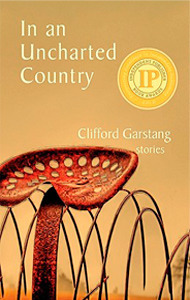 In honor of Short Story Month 2013, Press 53 has lowered the Kindle price of my first book to just $0.99.
In honor of Short Story Month 2013, Press 53 has lowered the Kindle price of my first book to just $0.99.
In an Uncharted Country is a collection of linked short stories set in Rugglesville, Virginia.
Tim O’Brien called the book “impeccably written, sumptuously imagined, and completely enchanting.” Peter Ho Davies called it “a subtly braided collection of spare, taut stories.” And Elizabeth Strout said, “These characters are real, vulnerable, and always, in unique ways, brave.”
So I think you’ll like it. At $0.99, it’s pretty low-risk.
May 1, 2013
Short Story Month 2013
 I didn’t do such a great job with National Poetry Month. I started out strong, highlighting several poetry collections I had on the shelf near my desk. But then . . . I got busy.
I didn’t do such a great job with National Poetry Month. I started out strong, highlighting several poetry collections I had on the shelf near my desk. But then . . . I got busy.
Now, though, it’s Short Story Month. I’m still busy, but I read a lot of stories, so I’ll do my best to bring some collections to your attention. There are, of course, my own books, In an Uncharted Country and What the Zhang Boys Know, both story collections published by Press 53, a press that specializes in poetry and story collections. But there are lots more to talk about.
In my pile of books to read right now I’ve got Tenth of December by George Saunders; Big Bend by Bill Roorbach; Battleborn by Claire Vaye Watkins; Mostly Redneck by Rusty Barnes; Where I Am Now by Robert Day; and Into the Wilderness by David Ebenbach. And that’s without looking at the collections I’ve recently added to my Kindle.
So I’ll try to do my part this month. Stay tuned.
April 28, 2013
Bookfair Reflections
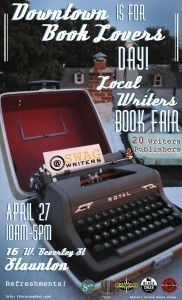 Yesterday (Saturday, April 27, 2013) was the inaugural SWAG Writers Bookfair (Downtown is for Book Lovers Day). To me, it seemed like a success. Throughout the day we had a steady stream of visitors and it seemed like a lot of people left with books. We gained exposure for local writers and for our organization, SWAG Writers (that’s the Staunton-Waynesboro-Augusta Group of Writers, a subchapter of the Virginia Writers Club). And now that it’s over, I thought it would be useful to reflect a little on the experience.
Yesterday (Saturday, April 27, 2013) was the inaugural SWAG Writers Bookfair (Downtown is for Book Lovers Day). To me, it seemed like a success. Throughout the day we had a steady stream of visitors and it seemed like a lot of people left with books. We gained exposure for local writers and for our organization, SWAG Writers (that’s the Staunton-Waynesboro-Augusta Group of Writers, a subchapter of the Virginia Writers Club). And now that it’s over, I thought it would be useful to reflect a little on the experience.
Conception. I had this idea quite a while ago. I participated in another local author event last year, at the library, but it was lightly attended and few books were sold. Although I applaud the library for the effort, the location just wasn’t good to draw in casual shoppers. So, when Virtual Sisters began operating their co-working and pop-up retail space on Beverley St., I realized that was the ideal location for this sort of thing—a store front on Staunton’s main street. I ran the idea past other members of SWAG Writers and also talked to the local bookstores about supporting the event. Everyone was enthusiastic.
Enrollment. I lined up authors in two phases. First, I asked for expressions of interest from our SWAG Writers email and Facebook lists. Because I wanted to keep the cost to authors low but needed to cover our expenses, including rental of the space, I needed at least 12 authors to make it work. My list quickly grew to 20! Then I began to worry that the space wouldn’t accommodate us if we got much bigger. As planning progressed, I needed to get firm commitments, so I asked people for their money—just $10—to confirm their space. (I know that fees at some bookfairs are much higher, but I wanted to avoid pricing anyone out of the event.) A few people dropped out at that point, but word was spreading, so I added some more participants, and we held steady at 20, which, by my estimation, was just right for the space. (A few more had to cancel at the last minute for various reasons; we ended up with 16, although one of the vendors was a publisher who had 4 authors with her.)
Publicity. It isn’t clear to me what works in a town like Staunton, but we did publicity on several fronts. Lindsay Curren designed a poster that we also used for our email and Facebook communications. That poster went up in libraries, coffee shops, the Visitor’s Center, the bookstores, and a few other locations. We did a press release that was distributed widely. We bought an ad in the GO! section of the local newspaper. We taped a 30-second radio spot that ran on Star94 FM. The Staunton Downtown Development Association was supportive and included the event in their calendar and email blasts. We joined with the local bookstores to make the event broader—Downtown is for Book Lovers Day—and also got them to agree to let us distribute coupons for discounts at their stores. I don’t know what else we could have done. More posters, maybe? Does anyone see posters?
Preparations. As the day approached, we put up a window display at the store consisting of books by participating authors plus a couple of the posters, along with the name cards we were using for each of the authors. On the morning of the event a couple of us arrived early and arranged tables and assigned spaces to the authors. (We tried to be fair about the assignments. In the end, I think placement didn’t matter, as all of the shoppers who came in made the full rounds. One or two people stuck their heads in the door and left, but anyone who was there more intentionally seemed to hit all the tables.) I had asked vendors to bring food, and a few did that. We had a table set up for cookies; some vendors distributed candy at their own tables, which seemed to work well for them.
The event. We opened at 10:00am. The first hour was light, but things started picking up at 11am and we were pretty busy until 3pm. A total of about 60 people came through the fair during the day. Judging by the noise, there was a lot of conversation going on, which was exciting. Authors were talking about their books and about writing generally. We added 8 names to the SWAG Writers email list. I sold a bunch of books. I don’t have figures from the other authors yet, but it looked like a lot of people were buying books. So that’s a good thing.
Surprise! At about 3pm, a guy came in the door carrying a pizza. I thought it was amusing that someone in the fair had ordered a pizza, but it turned out that John Huggins from Shenandoah Pizza had just sent us the pizza as congratulations/thank you for the book fair. And it was fantastic pizza! What a wonderful thing for him to do. I was already a fan of the place, but that just made me more loyal.
The end. Authors started to pack up and by 5pm we were out of the space. It was a long day, but, I think, a success. This morning I sent an email to all the participants asking for feedback so we can make improvements for next year.
April 24, 2013
Downtown [Staunton] is for Book Lovers! — Saturday, April 27
 Our local writers’ organization, SWAG Writers, is holding a Bookfair this Saturday, April 27, from 10am to 5pm, at 16 W. Beverley St., right in the heart of downtown Staunton. More than 20 local writers will be on hand to talk about their work, the writing process, and, of course, to sell and sign copies of their books.
Our local writers’ organization, SWAG Writers, is holding a Bookfair this Saturday, April 27, from 10am to 5pm, at 16 W. Beverley St., right in the heart of downtown Staunton. More than 20 local writers will be on hand to talk about their work, the writing process, and, of course, to sell and sign copies of their books.
Some of the authors who will be there are Sarah Kennedy, R.T. Smith, Betsy Ashton, Linda Levokove, Phyllis Anne Duncan, Stan Galloway, Nicholas Galloway, Bruce Wetterau, William Wood, Matthew Warner, Chuck Welsh, Jennie Coughlin, Deborah Conner, Jonathan Rintels, Paul Klein, and Maurice McFadden, along with local publishers Lot’s Wife, Cedar Creek Books, and Deep Kiss Press.
The event is sponsored by SWAG Writers, Staunton Downtown Development Association, and the four downtown independent bookstores: Barrister Books, Black Swan Books, Bookworks, and the Sacred Circle.
Buyers at the fair will receive a coupon good for 15% off one book at all four stores–potentially a very valuable coupon!



